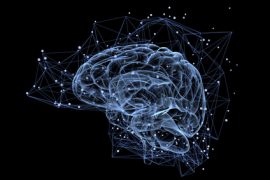
Last week we looked at the prefrontal cortex. Nestled right behind it is our topic for part 4: the anterior cingulate cortex.
Painful emotions
The anterior cingulate cortex (or ACC, as we will call it for short) is connected to many different parts of the brain. One of these is the limbic system, the ’emotional nervous system’, which we looked at in part 1. It’s no surprise, then, to find that the ACC plays an important role in emotion. One of the things it does is assign which emotion to apply to outside stimuli. If someone does you a favor, or gives you a telling off, it’s the ACC that decides how you feel about it. For this reason, it is also the main part of the brain that ‘lights up’ when you experience pain. Interestingly, this is the case both for physical pain and distress caused by bullying, ostracism and the like. People often describe the feeling of being verbally or emotionally abused as being similar to physical pain. They are not exaggerating.
Spindle neurons
Neurons are the cells that transmit information around the body. Most of the neurons in the body are found in the brain, because that’s where most of the information is being sent and received. The anterior cingulate cortex is the main location of a special type of neuron, known, because of their unusual shape, as spindle neurons. Spindle neurons are found in only one other part of the brain, and in only a few other animals. These animals – elephants, gorillas, dolphins, and certain whales – are all known for their unusual intelligence and relatively complicated social organisation. Spindle neurons are active whenever you engage in difficult tasks that require a lot of thought, but also when you experience strong emotions. They have been shown to go off when mothers hear an infant cry. These unique cells are the engine of what we call social and emotional intelligence.
JD Murphy specializes in couples therapy and addiction treatment. For therapy in Pineville, LA, call today or fill in the contact form and click send.

